Last updated on December 29th, 2023
Featured image: US Capitol with Washington Monument in distance in Washington D.C. | Photo by Karen Gershowitz
Free things to do in Washington, D.C.
by Karen Gershowitz
After a couple of months at home in New York City, I was ready for a long weekend in nearby Washington, D.C. Whether it’s the vibrant colors of a street mural, the corridors of a historic library, a museum exhibition, or the lively buzz of a market, Washington, D.C. is a city that has something for everyone. For travelers, the city offers more than just a glimpse into the nation’s past; it is a living, breathing entity that continues to evolve and inspire. Best of all, most of the museums and experiences are free, and it’s easy to get around on foot or using public transit. The DC Circulator bus route is $1 in cash or, with a pass, seniors ride for $0.50.
Eight museums and sites in Washington, D.C.
While there were several museum shows I wanted to see, the real reason for my journey was to visit some of the well-known sites I’d never set foot in or hadn’t been to in decades. Best of all, it’s a quick, inexpensive train ride from New York and nearly everything is free. To prepare for the trip, I applied for the Capitol tour and a tour of the White House. The Capitol Tour was approved, but the White House was not (most likely because of the tense situation in the Middle East and the demonstrations in the city).
Book a Capital Tour and find tickets for other Washington D.C. attractions on Viator here!
1. The Renwick Gallery
My weekend began with a visit to the Renwick Gallery, a branch of the Smithsonian American Art Museum dedicated to contemporary craft and decorative arts. The highlight was Janet Echelman’s massive knotted and braided fiber installation. It’s a spectacle of color that captivated me as the lighting and mood changed. Her installation is on permanent display. The gallery also displayed other impressive works, like James Watkins’ massive cauldron and George Rodriguez’s “Mexican American Gothic,” reflecting the diverse talent and creativity of the American craft scene. From there, I walked a few blocks and indulged in some of the best calamari I’ve ever eaten at Kellari Taverna.
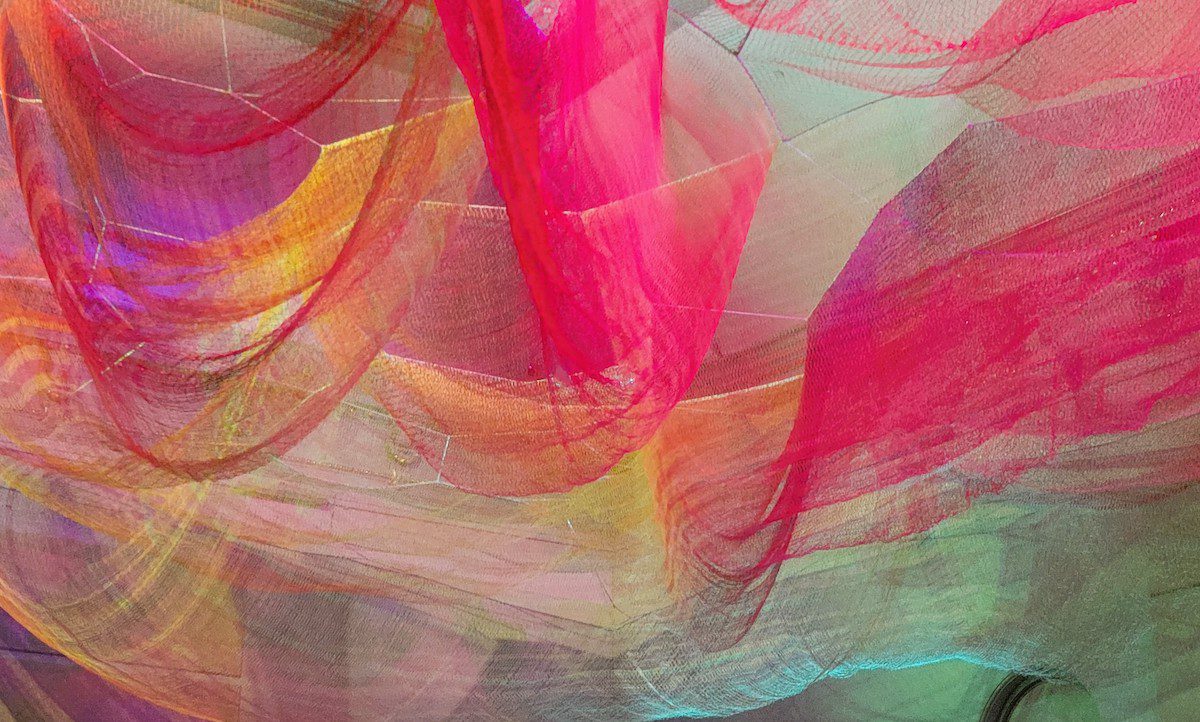
Jane Echleman’s ‘Environment’ in the Renwick Gallery / Photo by Karen Gershowitz
2. Historical landmarks: the US Capitol, Library of Congress and National Mall
I dedicated the second day to exploring a few of the city’s many historical landmarks. Just exploring these could easily take a full week. The US Capitol tour was nearly overwhelming due to the number of tourists, most of them school groups. I asked the guide how many people typically tour the Capitol on any given day. He told me, “This is the quiet season, so only about 4,000 today. During high season, we can have as many as 10-12,000 people.” Given that, I’d avoid taking the tour during spring and summer.
A long tunnel connects the Capitol with the Library of Congress. I’d been to the library years ago and remembered it as beautiful. My memories paled in comparison to seeing it again. The architecture, murals, and tilework are breathtaking. The library has extensive collections of books, manuscripts, photographs, and maps. On display was an exhibition of historical photographs, including some that are iconic and others that should be.
The National Mall is the open-area national park running between the Capitol and the Lincoln Memorial. The imposing Washington Monument is midway between those two endpoints. It’s home to eleven Smithsonian museums, all of them free. Time limitations made visiting all of them impossible. I focused on newer museums that I hadn’t explored.
3. American Art Museum
The architecture of the American Art Museum’s East building is unusual and impressive. It houses contemporary art. When I needed a break, I ate lunch at a café with a bird’s eye view of the airy central lobby.
It is possible to walk below ground to the museum’s West building and eventually to the sculpture garden. I’d never gone through the tunnel and was delighted by the artwork, café, gift shops and the window against which a waterfall cascades. At the end of the West building is the sculpture garden, a green respite with an outdoor café and many benches—something I needed after all that walking.
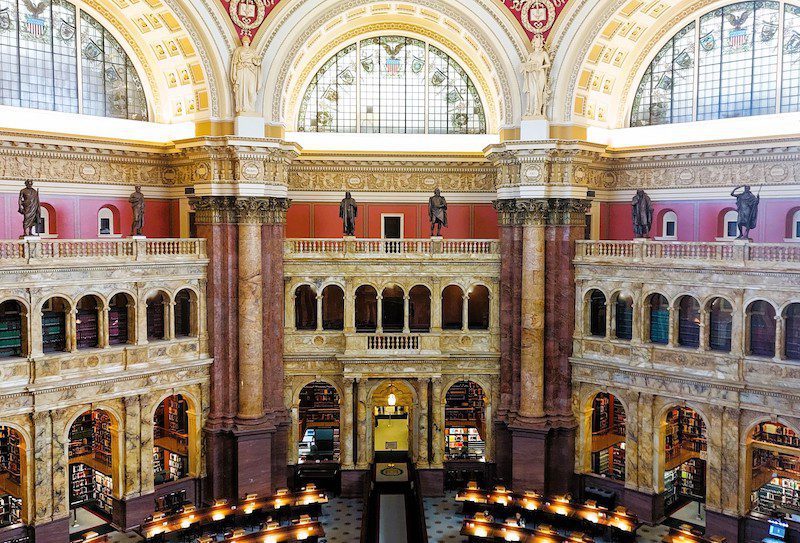
Library of Congress in Washington D.C. / Photo by Karen Gershowitz
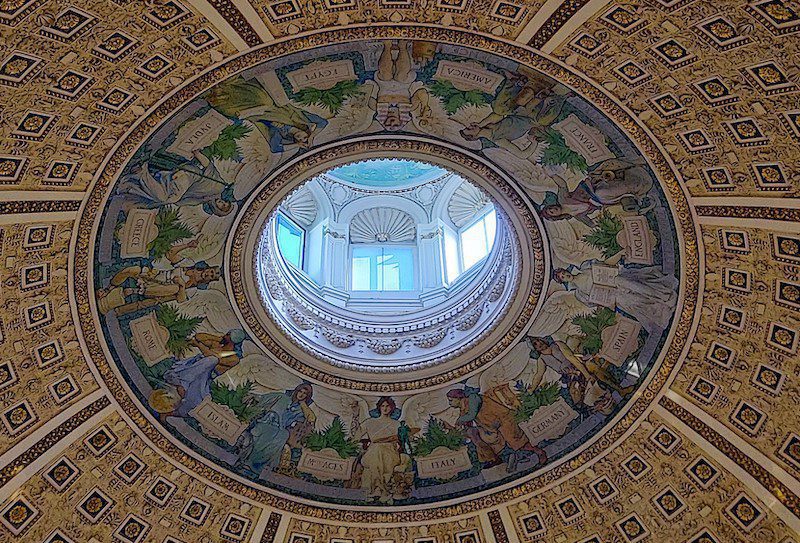
Dome central reading room Library of Congress / Photo by Karen Gershowitz
4. Kennedy Centre for the Arts
After resting at my hotel, I headed to the Kennedy Center for the Arts. Despite my many times in DC, I’d never attended a performance there. I arrived early so I could explore the complex, which contains an exhibition about John F. Kennedy, terraces with expansive views of the city, a cafeteria and a more formal restaurant. I ate dinner at the cafeteria and was impressed by the selection and quality of the food. The comedy show I attended was great fun.
5. Hirshhorn Museum
The Hirshhorn Museum was a focal point of my next day. I wanted to see Simone Leigh’s exhibition. Her work had represented the US at the 2022 Venice Biennale, (one of the world’s premier art exhibitions). Her massive sculptures showcased an impressive blend of skill and cultural narrative. The museum also housed other engaging exhibits, contemporary photography from China and an installation by performance artist Laurie Anderson. Exhibits change regularly so check to see what’s on display.
I’d wanted to visit the castle, the original Smithsonian Museum, and home to amazing artifacts, but it is closed now for renovation.
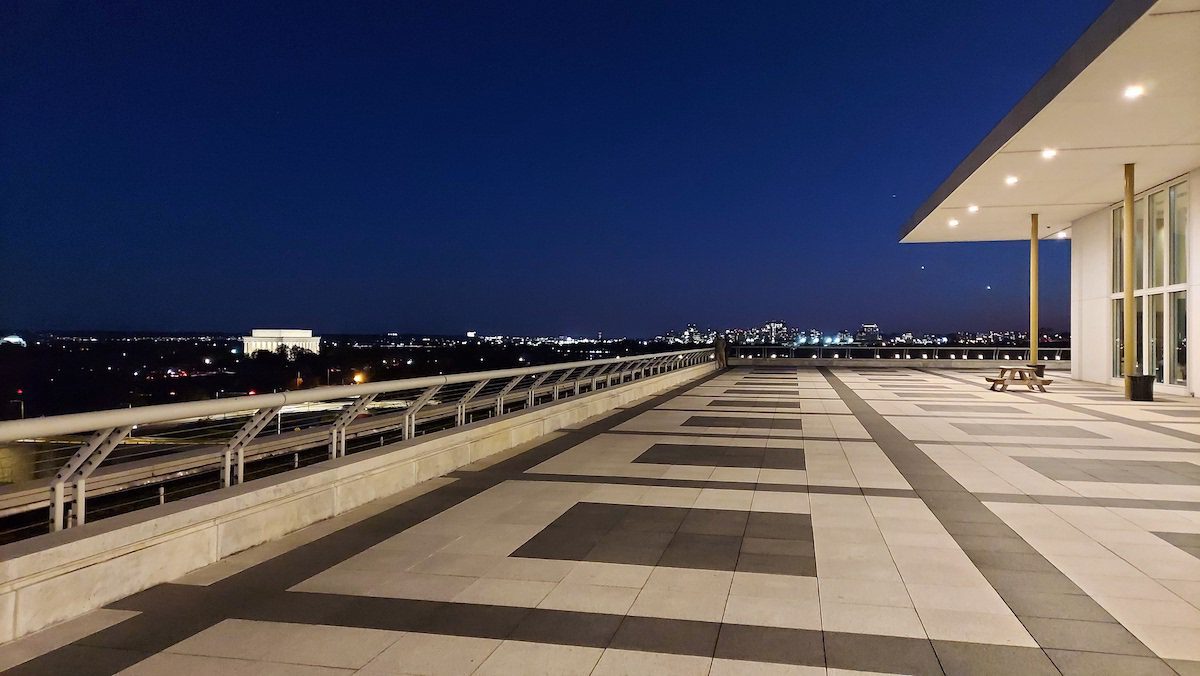
View from Kennedy Center for the Arts / Photo by Karen Gershowitz
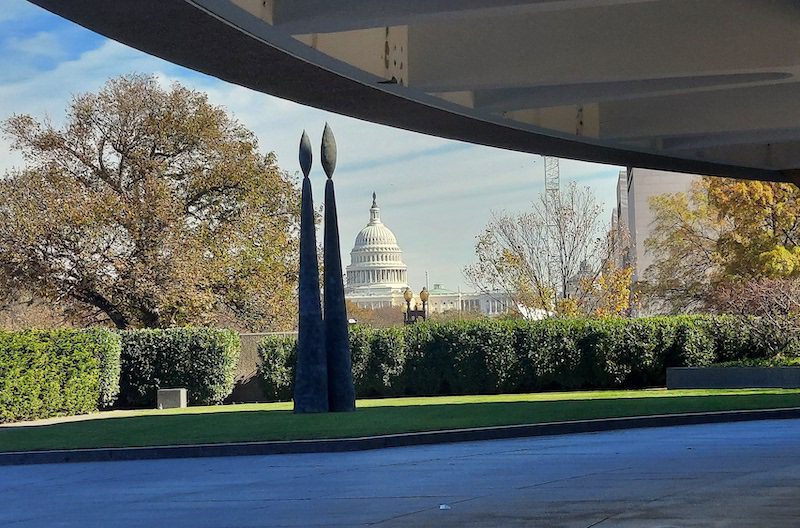
The Capitol seen from the Hirshhorn / Photo by Karen Gershowitz
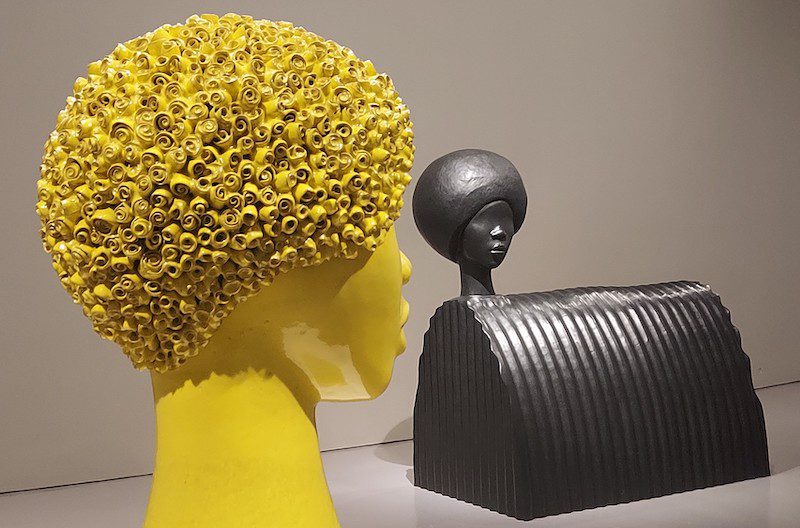
Simone Leigh sculpture at the Hirshhorn/ Photo by Karen Gershowitz
6, National Museum of African American History and Culture
Instead, I made my way to the National Museum of African-American History and Culture. I was tired, so I asked a docent what the absolute must-sees were. She suggested the Afrofuturism exhibition and the contemplation fountain. Correct on both counts. The Afrofuturism exhibition highlighted history, aspiration, and aesthetics. The display made even the most difficult of topics engaging. At the contemplation fountain, I rested and reflected on all I’d seen. I couldn’t resist taking a quick look at the museum’s art collection. It is fabulous, the highlight being Bisa Butler’s stunning portrait of Harriet Tubman.
7. NOMA (North of Massachusetts Avenue)
Taking a break from museums the next day, I ventured into NOMA (North of Massachusetts Avenue). It’s an area I’d never heard of, much less visited. There’s a good reason for that. Until about eight years ago, it was a crumbling industrial zone. It’s been rapidly transforming into a vibrant neighborhood filled with art. The DC Mural Tour, led by enthusiastic guide Jason Bowers, explored the neighborhood’s artistic renaissance. We walked through streets lined with stunning murals.
After the tour, I met my niece and her family at Union Market. The market was built in 1931 and housed seven hundred food vendors, mainly wholesale. Some historic vendors, like a meat purveyor and tofu manufacturer, still do business there. But trendy food stalls, restaurants, and shops have taken over most of the market. We enjoyed delicious food in a lively atmosphere.
8. National Museum of the American Indian
On my last morning, before returning home, I briefly visited the National Museum of the American Indian. This too is new since the last time I visited the museums on the mall. Architecturally, it is a beautiful building. The central lobby is designed to feel like the interior of a kiva. It’s massive, spacious, and sunlit. A short walk from there is the National Botanical Garden. I was delighted to discover they’d just installed part of their holiday decorations. Replicas of famous DC buildings were constructed using natural materials. I recognized the Capitol, White House, Supreme Court, and Smithsonian Castle, to name a few.
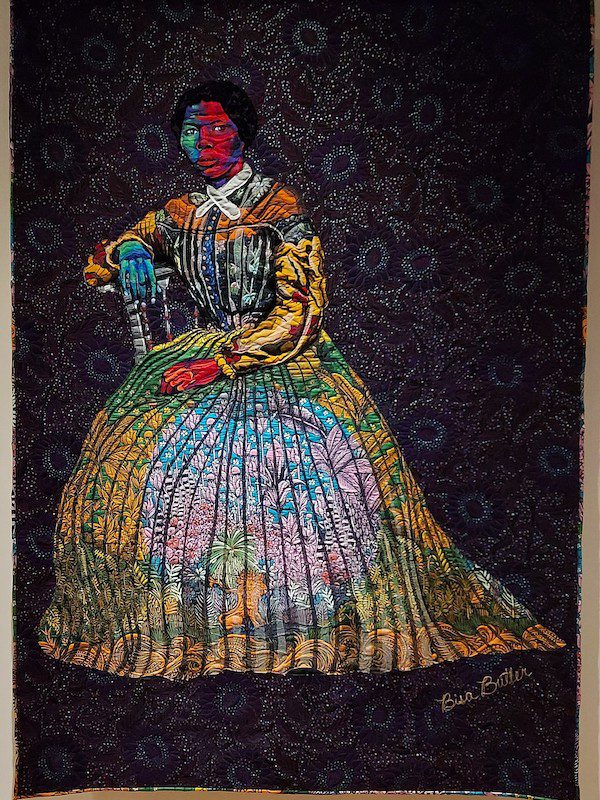
Bisa Butler portrait quilt of Harriet Tubman / Photo by Karen Gershowitz
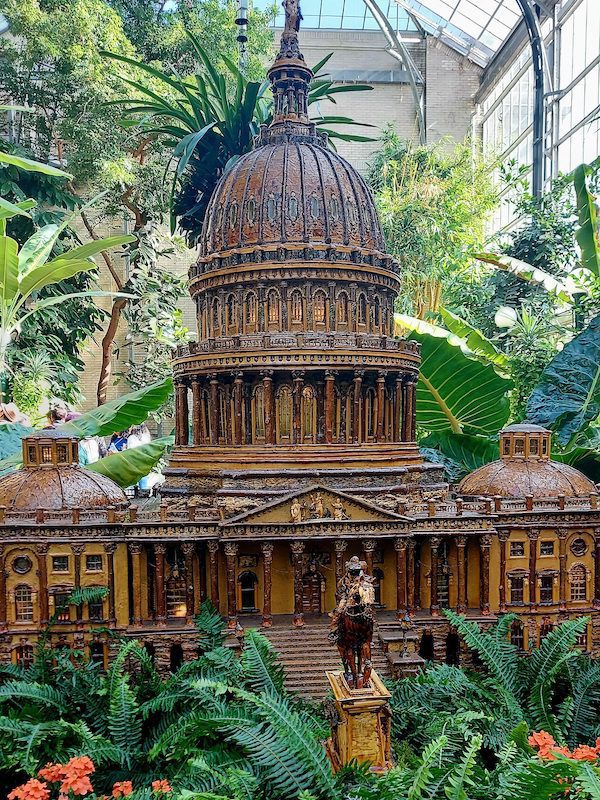
Replica of the US Capitol at the Botanical Garden / Photo by Karen Gershowitz
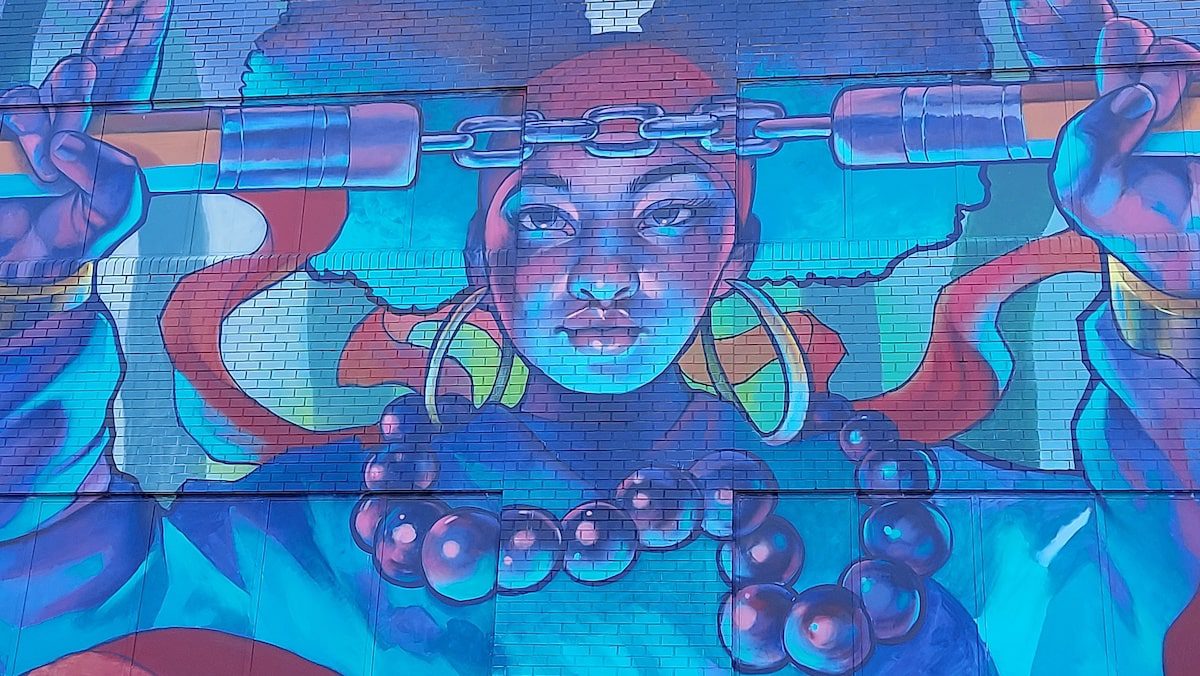
Colourful mural in the NOMA district of Washington D.C. / Photo by Karen Gershowitz
Washington D.C. is a city that caters to a variety of interests—from art and history to culinary explorations. I focused on attractions on the mall, but there are many dozens of museums and neighborhoods to explore that are easy to reach by public transportation.
If you go to Washington D.C.
Find a hotel that fits your needs on booking.com here.
All the Smithsonian museums are free and open seven days a week, year-round, except for Christmas and New Year’s Day.
The Metro is easy to navigate and nearly all stations have escalators. There are also many buses and the DC Circulator.
If you want to visit the Capitol or White House, you must request admission in advance.
- To visit the Capitol, US Citizens need to contact their members of Congress. Citizens of other countries must contact their embassy.
- To visit the White House, visit their website for more information here.
Tickets for the Kennedy Center sell out. You can purchase tickets before your DC visit.
More to Discover From the USA
Where to Stay in New York City: Recommendations From Solo Women
Women share their top choices on where to stay in New York City, including hotels, hostels, and affordable options across the city.
Why Women Should Visit Las Vegas, Nevada (From a Local)
Diana Eden says her home of Las Vegas, Nevada has much to offer women over 50, with its energy and ability to constantly reinvent itself.
America’s Hidden Gems: Explore Santa Monica with Kimberley Seldon
Designer, broadcaster, writer and owner of Business by Design, Kimberley Seldon shares her hometown travel tips for Santa Monica, California, with hidden gems for women over 50 to explore.

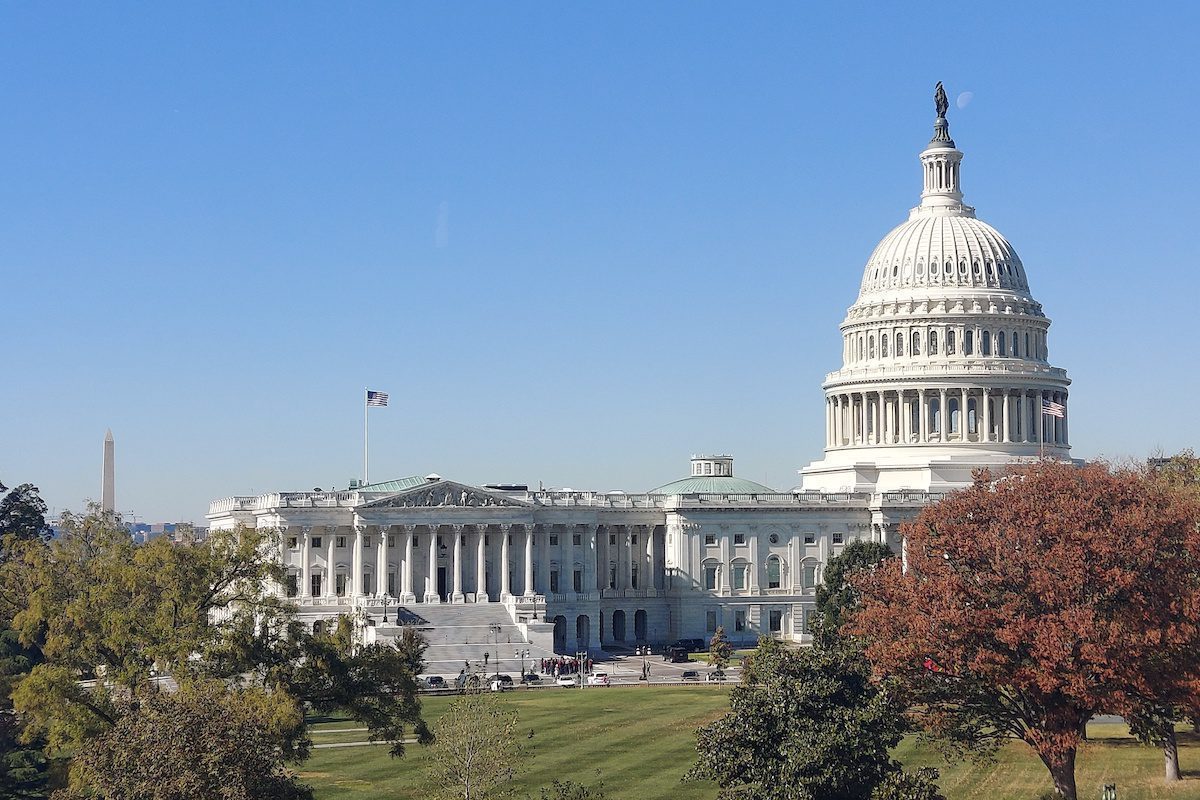



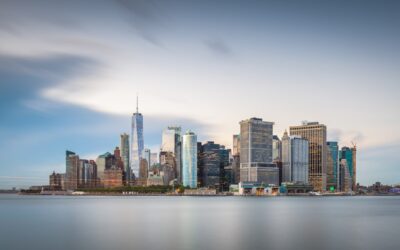
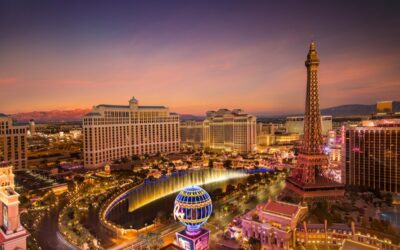
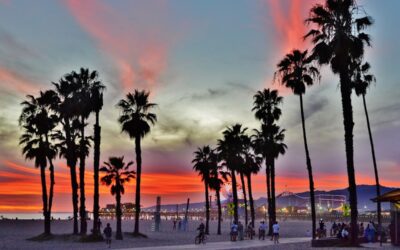
Thank you for this great article! I was planning a week-long visit to Washington in May 2020, but Covid got all that 😞 . I must think about re-scheduling this.